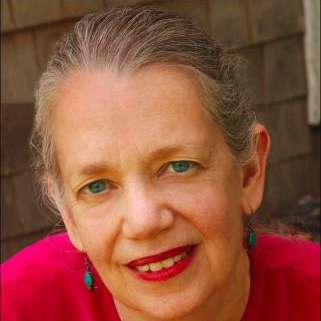San Francisco Ballet’s Program 2: Bright Fast Cool Blue is made up of three ballets of contrasting styles and music. They hang together through a thread of choreographic innovation and technical virtuosity. Unlike The Sleeping Beauty that opened the season, each of the three ballets featured here followed only the slimmest of storylines, presenting instead quixotically changing moods and nuanced contexts. The company’s skill was thus highlighted and celebrated, the dancers’ emotions infused in gestures of foot and body like a fine scent.
The program opened with Balanchine’s moonstruck ballet, Serenade. As the curtain opens to the resonant chords of Tchaikovsky’s Op. 48 for orchestral strings, the undecorated stage reveals lines of women, the light blue tulle of their tutus drifting lightly below the knee. Their bare shoulders seem pale under the blue stage lights. Each stands perfectly still, one arm stretched out and up, the hand flexed back. In those first moments Balanchine captures the essence of romantic ballet: its evanescence and its ephemerality. Surely this vision of feminine beauty cannot last. It dwells only in memory and in desire.
The opening movements are simple, only the arms move. Gradually the dancers flow into patterns and symmetries that seem dissonant to such a fragile world. This tension sustains the visionary quality of the piece. Carlo Di Lanno and Yuan Yuan Tan danced the waltz, and while they were exquisitely flawless in their steps, the chemistry between them seemed distant and chill. Mathilde Froustey enlivened the section decorated with Russian character steps. And Jennifer Stahl added fire as the Angel, matched by the ever-gallant Luke Ingham as the Dark Angel.
In the opening half of Benjamin Millepied’s The Chairman Dances—Quartet for Two, the dancers are also dressed in blue, but it’s the blue of Mao’s Red Army; a bright red band tied around the upper arm. Written as a study for his opera Nixon in China, this foxtrot with insistent drive and hectic syncopations is unmistakeable Adams, and meant to raucously conjure up Mao’s dance club follies with the mistress who would later be the formidable Madam Mao. The choreography is far more fun than the political milieu the music refers to later became. In the midst of fast-moving chorus work, Carlo Di Lanno and Maria Kotchekova dance the lead couple. They are playful and flirtatious. Di Lanno flings the tiny Kotchekova around with glee, and neither misses a beat in a series of very tricky and intricate duets. An abstract band of blurred light moves slowly up the upstage scrim, offering a contrast to the tumultuous cascade of bodies below.
The second half of the piece, Quartet for Two, is radically different to the first. Set to Adams’ “Christian Zeal and Activity,” the middle section of American Standard based on the hymn “Onward, Christian Soldiers,” it is a series of duets. First one couple, then another, then the men, then the women; each duet separated by a blackout on the stage. Midway through, a soundtrack of a preacher comes on, looping his fervent description of “the miracle of the withered hand.” The dancers are dressed in flowing white, and the duets are close, with the dancers facing each other and seldom breaking away from the possibility of touch. There is a suggestion of ecstasy and the erotic. Phrases of intimate moves in the duet of two men are repeated in the duet of two women. Yuan Yuan Tan and Ulrik Birkkjaer danced the first couple and Jennifer Stahl and Benjamin Freemantle the second.
As disparate as these two parts of Millepied’s piece are, they serve as a bridge between Serenade and the closing Rodeo: Four Dance Episodes.
Rodeo had its San Francisco Ballet première at this year’s Gala. Set to the symphonic version of Aaron Copland’s affable tribute to the American West which was commissioned for a ballet originally choreographed by Agnes de Mille, Justin Peck’s up to date ballet takes up the theme of “how does a girl get herself a man among all these cowboys?” But fitting to the present day, the theme is submerged and the cowboys are just a gang of guys, some in costumes resembling soccer players, three looking like gymnasts, the rest garbed in generic athletic wear bordering on street clothes. It’s a lively, rambunctious piece, drenched in masculine energy and great if the company has a passel of great male dancers, which San Francisco Ballet proves it has.
Into these bounding, competing guys hurtles a lone female dancer. Not every ballerina can offer balance to 15 male dancers, but Dores André is ideal for the part. With her strong lines, sure technique and joyous energy, she prevails, scooping up the attention of Ulrik Birkkjaer, who is a complementary force in this engaging opening night.


